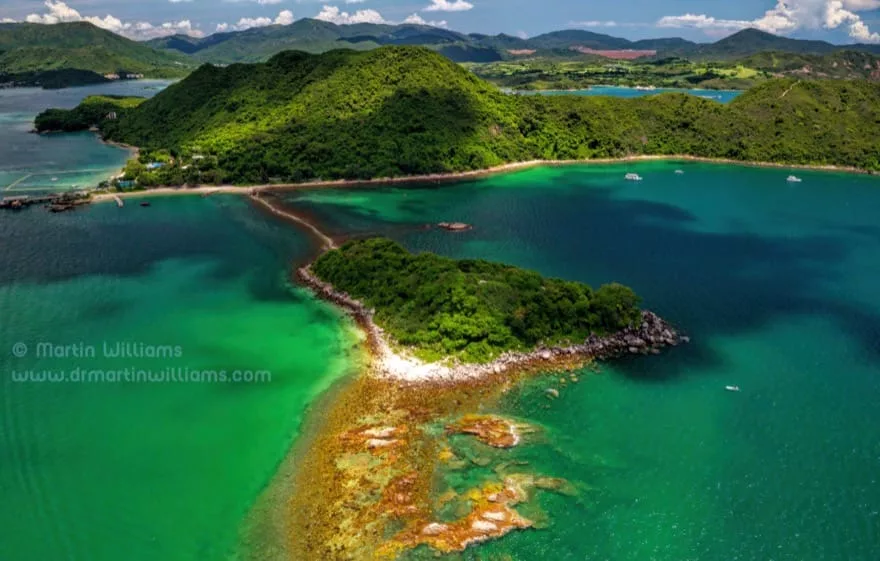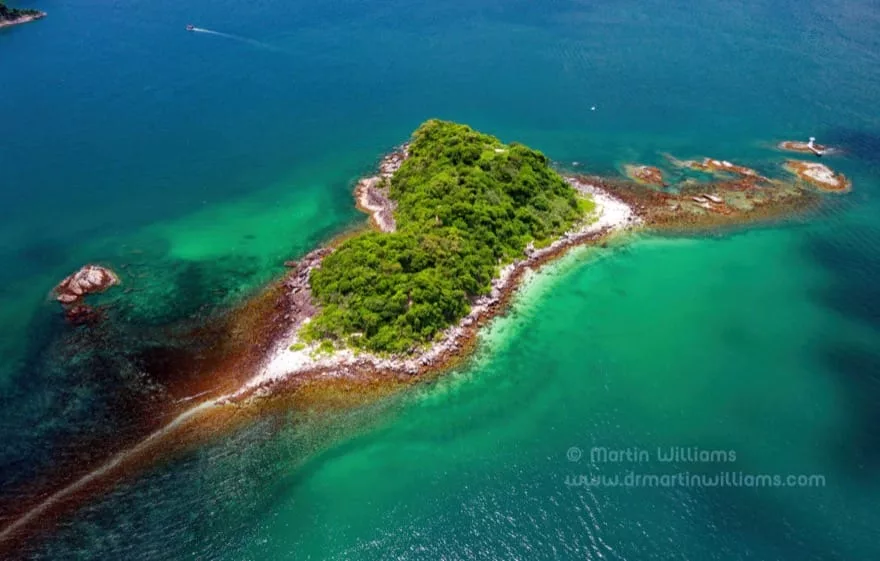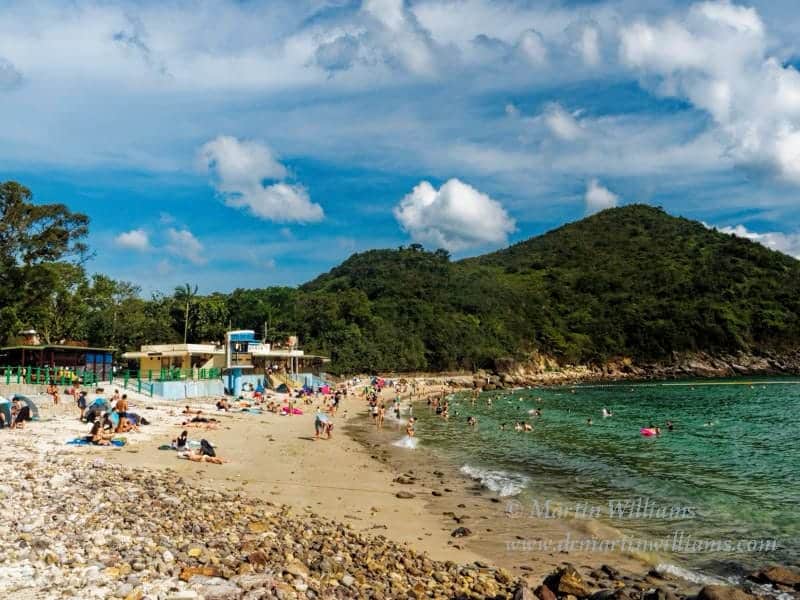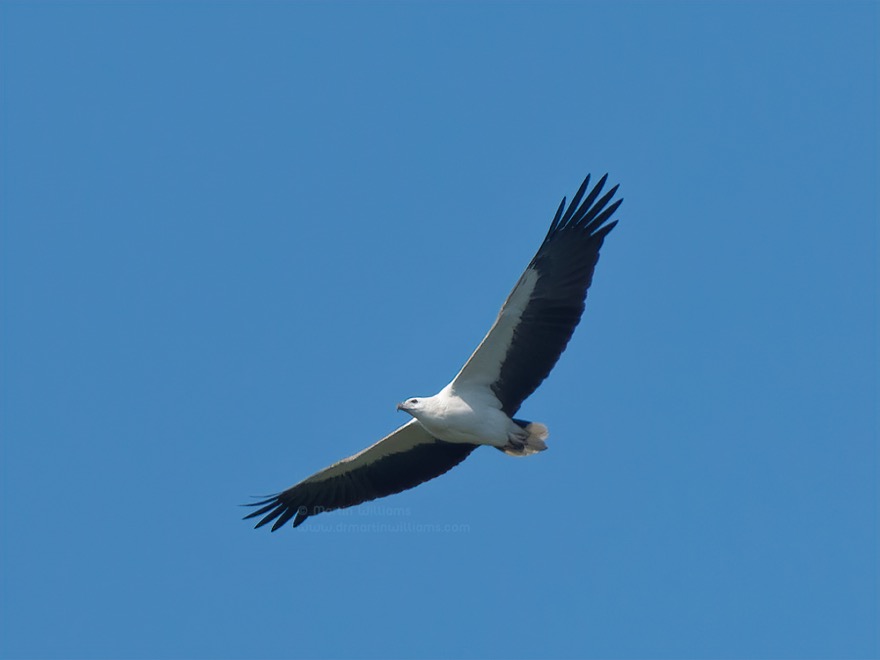Sharp Island (Kiu Tsui Chau) is the dominant member of Hong Kong’s smallest island country park, which also includes seven islets off its northeast and northwest coasts. As the name suggests, the island is indeed angular. The interior is a slender, north-south ridge that rises to 136 metres, with especially steep slopes to the west, small streams cutting into the east slopes.

The predominant rocks are volcanic. They include rhyolites, formed from viscous lava that was extruded from nearby vents. These belong to the fourth and final phase of volcanic activity in Hong Kong, and with an age of almost 141 million years, they just pre-date the columnar jointed tuff found to the east. At northern and western Sharp Island, there are also small exposures of quartz monzonite.
These are among the few exposures of intrusive rock – formed as molten rock was forced into existing rock, then cooled well below the surface – in the Sai Kung area. Quartz monzonite is similar to better known granite, but differs in chemical composition. Here, it was intruded into sedimentary rocks that formed during Hong Kong’s third phase of volcanic activity, and are 143 million years old.
The sedimentary rocks range from fine-grained siltstones to conglomerates and breccias with pebbles and stones. They were probably formed as nearby volcanoes were eroded, and rivers washed the material into a basin with lakes. This basin was created by earth movements related to volcanic activity. Nearby volcanoes were evidently still active, as there are also layers of tuff and rhyolite lavas.
These sedimentary rocks underlie northeast and west Sharp Island, as well as nearby islets including Kui Tau.

Kiu Tau is linked to Sharp Island by a tombolo – a sandy spit, which you can readily cross at low tide. There are boulders along the coastline on either side of the tombolo, formed of rocks including pale, crystalline quartz monzonite, orange and rusty brown sedimentary rocks, and dark grey tuff and ryholite. The boulders are especially large around the shores of Kiu Tau; some boulder scrambling is required to reach a wave cut platform off the islet’s west coast.
Residents and Recreation
Like much of the Sai Kung area, Sharp Island has proven a tough place to settle, but has become an important destination for recreation. There’s a somewhat ramshackle hamlet at Kiu Tsui, on the west coast of Sharp Island. There was once a small amusement park beside this. Though the hamlet survives, the amusement park has been abandoned, and is now in ruins: perhaps it should serve as a caution to anyone thinking to profit from Hong Kong’s wilder islands without focusing on and protecting their natural attractions.

Lying just 2 kilometres from Sai Kung, Sharp Island is a popular destination for day-trippers. It has three main beaches: one at Hap Mun Bay in the south, and two at Kiu Tsui on the west coast, with lifeguard services plus barbecue facilities at both Hap Mun Bay and Kiu Tsui Beach.
Flora and Fauna
The slopes of Kiu Tsui are well wooded, with native broadleaf trees including Camphor Tree Cinnamomum camphora, Ivy Tree Schefflera heptaphylla, Chinese Banyan Ficus microcarpa, as well as introduced Horsetail Tree Casuarina equisetifolia and African Tulip Tree Spathodea campanulata. Near the shoreline are typical coastal trees such as Cuban Bast Hibiscus tiliaceus and Screw Pine Pandanus tectorius; some mangroves grow at the stream mouths, especially along the west coast.

Though wildlife on land is mostly unremarkable, the islands are within a prime haunt of the White-bellied Sea-Eagle.
Marine life is more noteworthy, especially as Kiu Tsui boasts one of the most easily accessed coral communities in Hong Kong. The main area of corals lies south of the tombolo, and is marked by buoys that designate a no anchoring zone. Snorkelling here, you can readily see coral heads, along with other marine creatures such as urchins and colourful fish.



